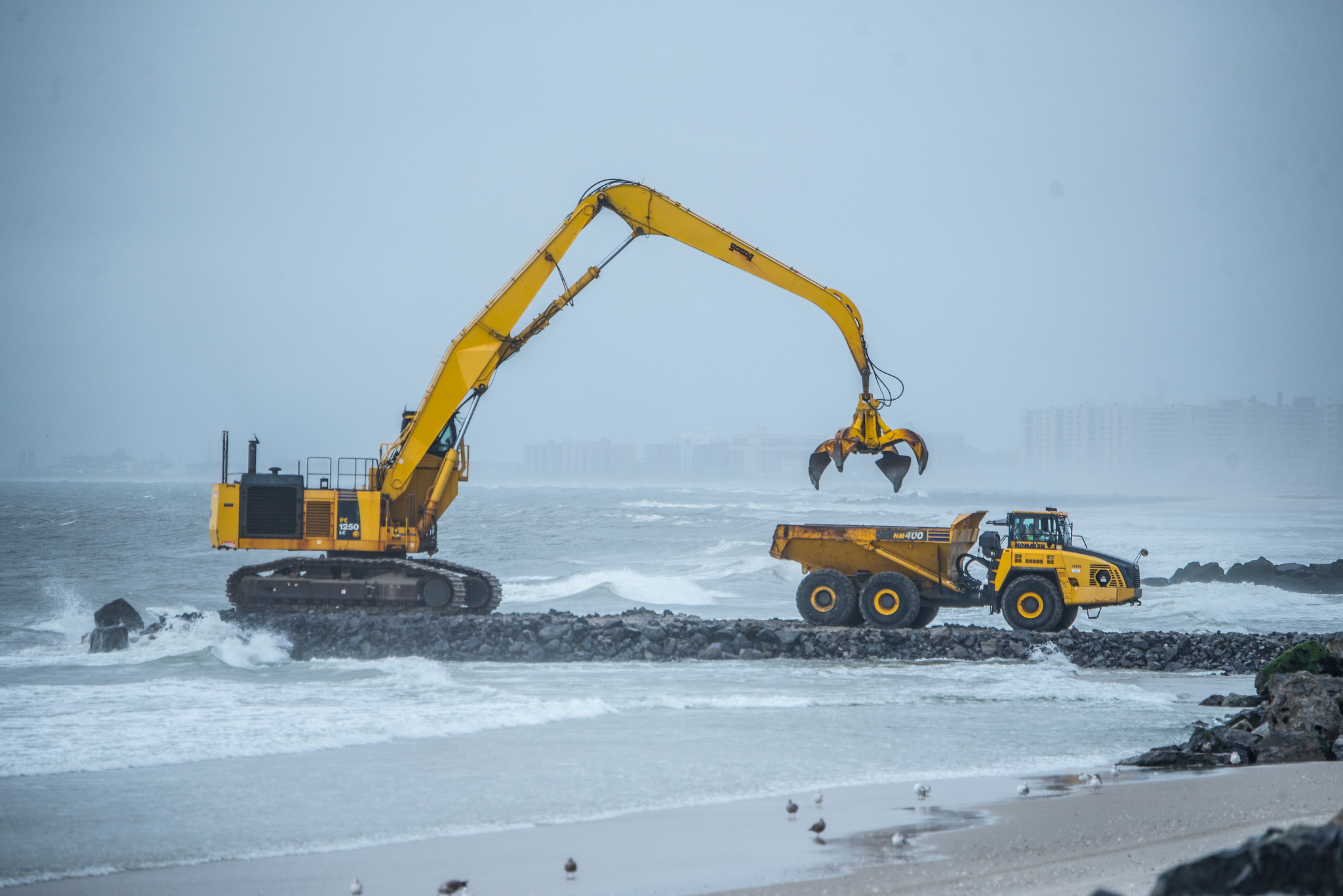
Read the full op-ed at Gotham Gazette.
—
This week, on the heels of the latest sobering United Nations climate change report, the next round of public input will close for one of the largest public infrastructure projects ever to be considered for the New York City region.
The U.S. Army Corps of Engineers is seeking feedback on its $52 billion proposal to protect New York City and the surrounding areas in New York and New Jersey from devastating coastal storms like Hurricane Sandy. And although this project has been progressing for almost a decade, there has been limited attention on this massive initiative, despite its potential to impact millions of New Yorkers and shift the way we interact with our waterfront. It’s time for New Yorkers to secure our future by making sure the Army Corps gets this right.
Hurricane Sandy was the worst natural disaster to ever hit New York City. During the storm, 44 New Yorkers lost their lives, nearly 70,000 homes were damaged, and millions of residents lost power for up to two weeks. Even after the storm subsided, it left devastating impacts in its wake. Thousands of New Yorkers were displaced from their homes, critical public and private infrastructure was damaged, and entire communities were upended. In total, Hurricane Sandy inflicted an estimated $19 billion in damages and lost economic activity across the city. And it showed us just how vulnerable our city is in the face of climate change.
These risks are only growing. Sea levels in the city have already risen by a foot over the last century, and the rapid acceleration of sea level rise over the coming decades means our coastal flooding will only get more frequent and intense. Temperatures are also rising. Intense rainfall events like Hurricane Ida are becoming more common. And the City projected in 2013 that by the 2050s, a Sandy-like storm could cause $90 billion in damage and economic loss – nearly five times Sandy’s impact.
That’s why the Army Corps’ work is so important as one piece of a comprehensive set of preparations for our growing climate risks. This $52 billion conceptual proposal, part of the New York and New Jersey Harbor and Tributaries Study (NYNJ HATS), is already nearly a decade in the making and assesses a number of potential flood protection measures for an area covering over 2,100 miles of land and affecting nearly 16 million people across the two states. In its tentative recommendations (called Alternative 3B), the Army Corps proposes a series of storm surge barriers and other flood protection measures in key points throughout the New York and New Jersey waterways. Once a concept is approved and funding is secured, the Army Corps will lead a design process through 2030, with measures in place by 2044.
This project presents a once-in-a-lifetime opportunity to install resiliency infrastructure of this scale, which is critical to protect our city against our growing climate risks. As New Yorkers, we must come together to demand that the Army Corps provide these measures as soon as possible and ensure that the designs are improved without adding delays to the process, since every year without flood protections is another year New York City remains at risk of extreme climate impacts.
First and foremost, these flood protection measures must be integrated into the fabric of our city and enhance our public spaces along the waterfront. For example, seawalls can also incorporate an elevated promenade with green space, so that New Yorkers have waterfront access and new public spaces to enjoy. We have already seen other climate resiliency efforts incorporate features and amenities like these for communities to enjoy, such as with the Rockaway Boardwalk and the East Side Coastal Resiliency project.
The designs must not only protect us from storms, but should also clean our water, enhance biodiversity, and guard against sunny-day flooding caused by sea level rise by maximizing the use of nature-based solutions. Green infrastructure such as wetlands and oyster reefs, though insufficient on their own as resiliency measures to protect our city, are a critical part of a holistic and smart resiliency strategy.
In order for this project to be successful, the design process must be community-centered. The Army Corps must meaningfully and thoughtfully engage local and historically underserved communities in impacted neighborhoods. This may include utilizing engagement strategies that go beyond what is standard procedure for federal public engagement processes, such as holding events during non-traditional business hours, providing childcare, or seeking input in locations where communities already meet.
The Army Corps must also prioritize environmental justice by ensuring that historically underserved communities are meaningfully involved, valued, and protected. Environmental justice is too-often devalued in federal cost-benefit analyses, but President Biden’s Justice40 demands a renewed commitment to environmental justice as we confront our climate crisis.
The Army Corps proposal is an unprecedented opportunity to bring together communities and federal, state, and local governments to invest in the future of New York City. We must improve the design for New Yorkers, while advancing without delay the critically-needed protections that this project could bring to our city as the climate changes. The future of our city depends on it.
***
Grace Rauh is the Executive Director of the 5BORO Institute, a think tank bringing together leaders across sectors to find innovative solutions for New York City. Daniel Zarrilli is the former Chief Climate Policy Advisor to the NYC Mayor and a 5BORO board member. On Twitter @GraceRauh & @DZarrilli.
